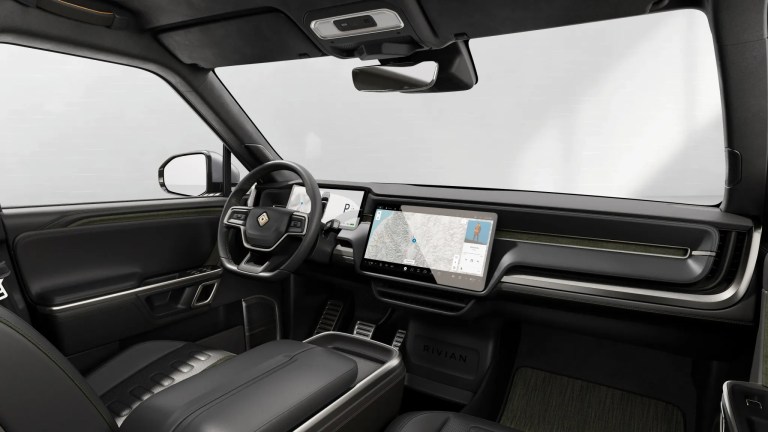If you’ve wanted to get into the driver’s seat of a Rivian, you’re not alone. The company is still working through a backlog of orders and recently raised its production targets due to demand and capacity for its vehicles. Rivian CEO R.J. Scaringe has even said that the company plans to always have some sort of backlog.
However, you may have also been holding off on buying a Rivian R1T because, well, they are insanely expensive for most car buyers today. The R1T, even with the company’s new cost-saving Dual-Motor system, still starts at $73,000. That, paired with today’s interest rate environment, meant that you could easily end up with a monthly payment of over $1000.
But, have no fear, leasing options are here. The company had already announced that they were planning to offer leasing of its vehicles, but we didn’t know when it would launch or what states would be available at launch. Well, we do now! Rivian has officially launched its leasing program for the R1T in select states in the United States. Unfortunately, the R1S does not have a leasing program just yet, so you’ll still have a longer wait for that one.
In what states is leasing available?
The leasing program for the Rivian R1T is quite similar to leasing programs from other car manufacturers. It is currently available in the following states with the company saying that it plans to expand to other markets “over time.”
- Arizona
- California
- Colorado
- Florida
- Georgia
- Massachusetts
- Michigan
- Missouri
- New Jersey
- New York
- Nevada
- Pennsylvania
- Texas
- Washington
What will the monthly payment be?
If you decide to lease a Rivian R1T, your monthly payment will be as low as $899 (according to Rivian’s advertising). It’s certainly not like leasing a Tesla Model 3 for as low as $349 sometimes, but it still is a lower monthly payment than purchasing. The company offers leases of 24 months or 36 months with annual mileage options of 10,000, 12,000, and 15,000 miles driven per year.

For an example of what a monthly payment might look like comparing financing vs. leasing, I took a look at an R1T that was available in my state (Pennsylvania) for $899 per month for a 36-month lease. The same vehicle had a monthly payment of over $1400 per month for a 72-month loan. So, for those who want a new vehicle every three years and don’t mind the restrictions and potential fees that come from leasing, it could be a viable option.
Of course, the more features you add, the higher that monthly leasing payment will go. Right now, Rivian is only offering lease options for select existing inventory, so you can’t fully customize your R1T and lease just yet.
What kinds of fees could leasing result in?
What are some of those potential fees? Leasing brings with it mileage restrictions and wear and tear fees. The company says that drivers who go over their yearly mileage limit (which you’ll choose when configuring your lease) will “incur an excess mileage charge if you exceed your pre-selected limit.”
You could also be charged with “wear and tear” fees when you trade your vehicle back in.
Can I still get the federal tax credit if I lease?
One nice thing about leasing with Rivian is that the R1T will still qualify for the $7,500 tax credit (as long as you are eligible). Rivian says that “any customers leasing a Rivian vehicle will see a $7,500 capital cost reduction applied to their vehicle subtotal during the digital purchasing process.”
So, basically, the company will take the $7,500 and decrease the cost of your lease, lowering the monthly payment. You will not see that money when you file your taxes.
What happens when my lease is over?
When your lease is over, you’ll have three options on what to do with your R1T:
- Purchase the vehicle
- Return it and lease another vehicle
- Return the vehicle to Rivian
What option is best for me?
If you’re trying to decide which option — financing vs. leasing — is best for you, the company does a decent job breaking down the benefits of financing vs. leasing:
Benefits of financing
- Every payment brings you closer to ownership
- Ability to fully customize your configuration and model selection
- Accumulating mileage at your discretion (no pre-set annual mileage limits)
- Off-roading without worry about excessive wear and tear fees
- Trading in or selling your vehicle whenever you’d prefer
Benefits of leasing
- Convenience of driving a brand new vehicle that remains under warranty during your lease term
- Getting a new vehicle every 2-3 years with the latest features
- Lower monthly payments in some cases
- $7,500 cap cost reduction at time of purchase due to EV lease credit– no application required
In the end, financing vs. leasing is a personal and situational choice. Do your research and figure out which option makes the most sense for you.








